
Half-Life 2: Episode One
Publisher: Valve SoftwareHalf-Life 2: Episode One is the first in a series of episodes that extends the Half-Life 2 story far beyond where the original left off. Valve has implemented its HDR rendering and used it to great effect in Half-Life 2: Episode One. There are also new higher-resolution textures, new facial animations and some AI improvements made in the new game too.
Anti-aliasing and anisotropic filtering were controlled from inside the game, and thus the drivers were left set to "Application Controlled". There are three options for the method of HDR used in this title. You can either disable HDR completely, make use of "Bloom" which is just what it says and less resource hungry in comparison to "Full" which, again is just what it says. It utilises a full dynamic range with the iris effect too.
We used a timedemo from a five minute portion of the Exit 17 level. The demo involves lots of HDR, lots of explosions and both indoor and outdoor scenes. The section we have used is typical of some of the more stressful areas in the game. Thankfully though, the game runs superbly on a wide range of hardware, while still looking absolutely stunning.
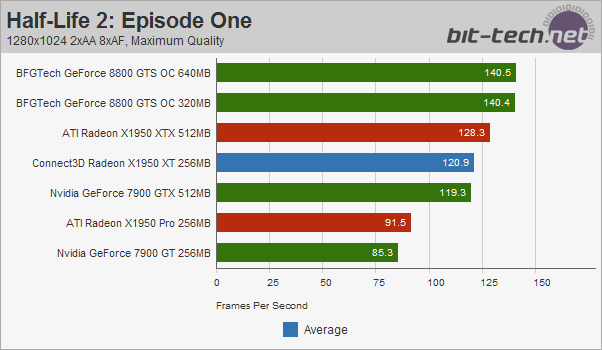
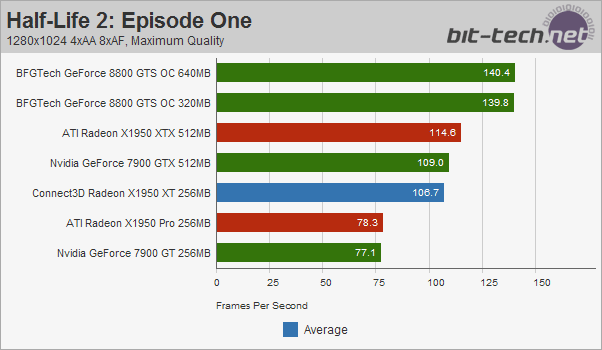
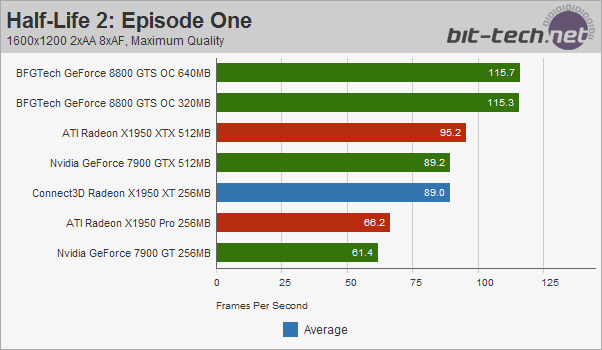
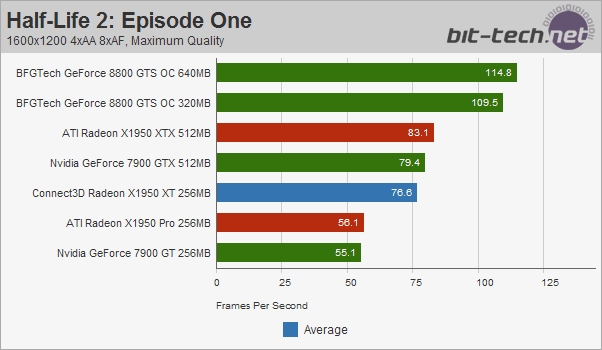
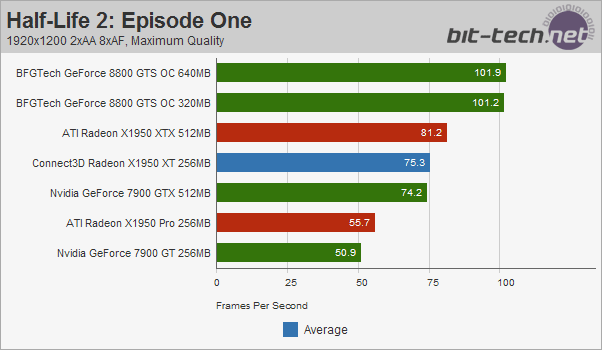
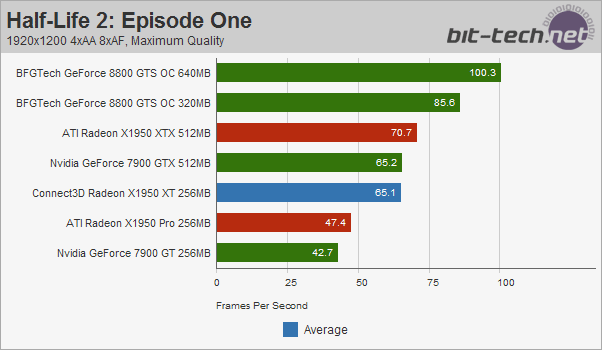
The power of Nvidia's GeForce 8800 architecture was really apparent in our Half-Life 2: Episode One benchmarks. While other cards started to fall away at 1600x1200 with anti-aliasing enabled, both the 320MB and 640MB versions of GeForce 8800 GTS continued to stride on. The BFGTech 8800 GTS 320MB only dropped below 100 frames per second at 1920x1200 4xAA 8xAF - we've previously shown that the GeForce 8800 GTS 320MB is even capable of good gameplay at 2560x1600 with 2xAA enabled.

MSI MPG Velox 100R Chassis Review
October 14 2021 | 15:04

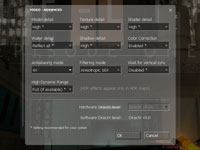







Want to comment? Please log in.